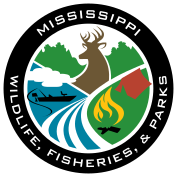
Written by: Pierce Young
By late winter, the white-tailed deer rut has taken its toll. Bucks that spent weeks chasing, breeding, and competing are now running on empty — their fat reserves depleted, muscles worn down, immune systems weakened, and sometimes injured from fighting. For landowners and property managers, this is one of the most critical times of the year to make a difference. Helping deer “refuel” after the rut not only supports herd health through the winter, but also sets the stage for stronger antler growth, higher fawn survival, and better hunting opportunities next season.
The Toll of the Rut
During the breeding season, mature bucks can lose up to 25–30% of their body weight. Many spend little time feeding, traveling long distances in search of receptive does and competing with other males. By January, their energy reserves are dangerously low — just as temperatures drop and natural forage quality declines.
If a property lacks high-quality late-season nutrition, bucks may struggle to maintain body condition as antlers begin to regrow, and antler quality may be suppressed the following year.
Does are also recovering during this time. Now pregnant, they require high-quality forage to support the development of fetuses that will become fawns in spring.
Here are key strategies property managers can implement to help deer recover efficiently:
Prioritize Winter Food Sources
By the post-rut period, most acorns have been cleaned up (if there were very many at all that year). That means deer rely heavily on cool-season forages and woody browse.
Cool-Season Food Plots:
If your property includes food plots, species such as wheat, oats, and especially clovers provide excellent late-winter fuel. Annual clovers like crimson clover supply high levels of protein at this critical time. These forages remain palatable and nutrient-rich during the cold months, offering both tonnage and protein for recovery.
Woody Browse Management:
Natural vegetation such as shrubs and vines provide essential winter browse. Conducting timber stand improvements (TSI), native field management, or edge feathering encourages new woody growth from species like greenbrier and blackberry — both highly preferred by deer in winter.
Reduce Competition Early in the Season
By ensuring your doe harvest quota is met early in the season — and, when applicable, that any management bucks are removed — you reduce overall competition for food resources. This ensures a greater surplus of high-quality forage remains available for the deer that will carry through to next year.
Early-season harvests help balance the herd in advance, preventing unnecessary stress on winter food sources when they’re most limited.
Plan Ahead for Next Year
Post-rut recovery doesn’t happen in isolation — it’s the result of good planning throughout the year. Landowners who maintain diverse food plots, manage browse, and balance herd density ensure deer have the nutrition they need before, during, and after the rut.
Each winter, take time to evaluate your property:
- Which late-season foods were most utilized?
- Did trail camera photos show healthy, active deer?
- Did bucks appear thin or overworked?
- Are food plots drastically taller inside exclosure cages?
- Is the highest-quality forage still available?
- Are deer eating plants they normally avoid?
These are all signs that indicate how well your property is meeting deer nutritional needs — or where improvements are needed. Use these insights to adjust your management plan for the coming spring.
The Payoff
When bucks and does can efficiently refuel after the rut, they enter spring in stronger condition. Bucks recover more quickly, leading to better body condition and improved antler growth the following year. Does that rebound well produce healthier fawns with higher survival rates.
In short, managing the post-rut period isn’t just about helping deer recover from the stresses of winter — it’s about building the foundation for a thriving herd and better hunting seasons to come.
Good management now pays dividends later — in healthier deer, stronger antlers, and a more balanced herd.
For more information about wildlife management visit